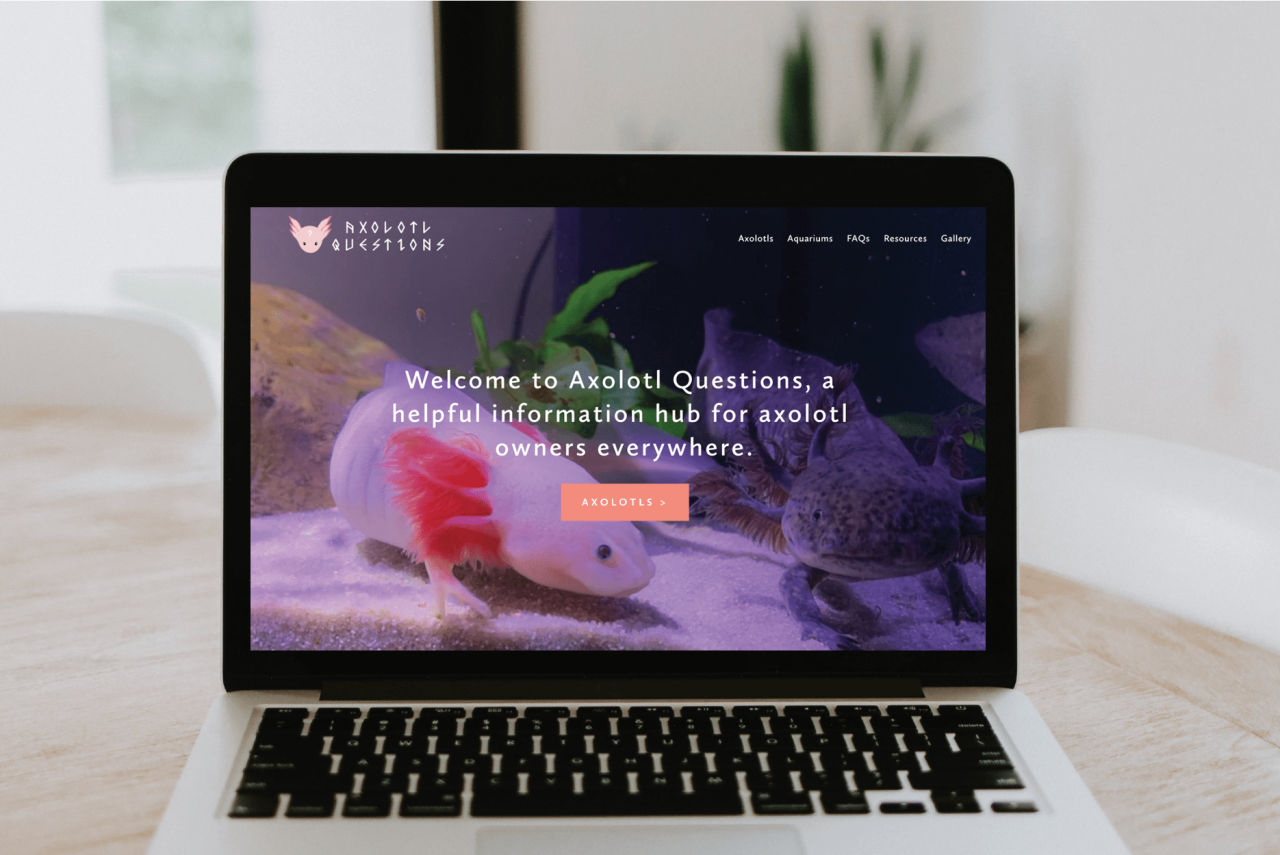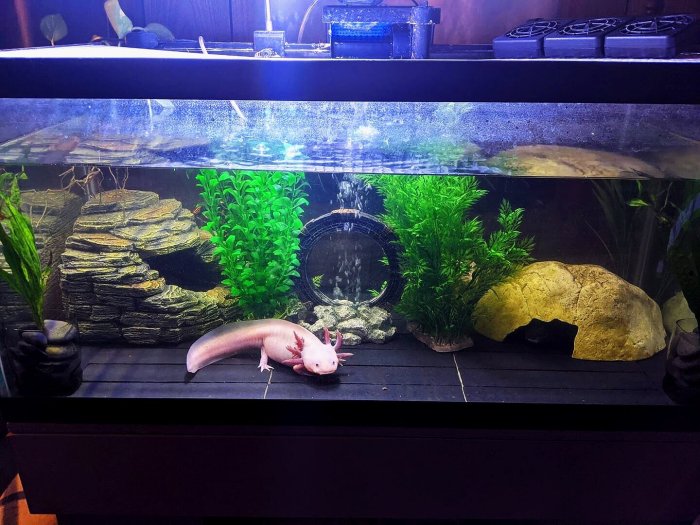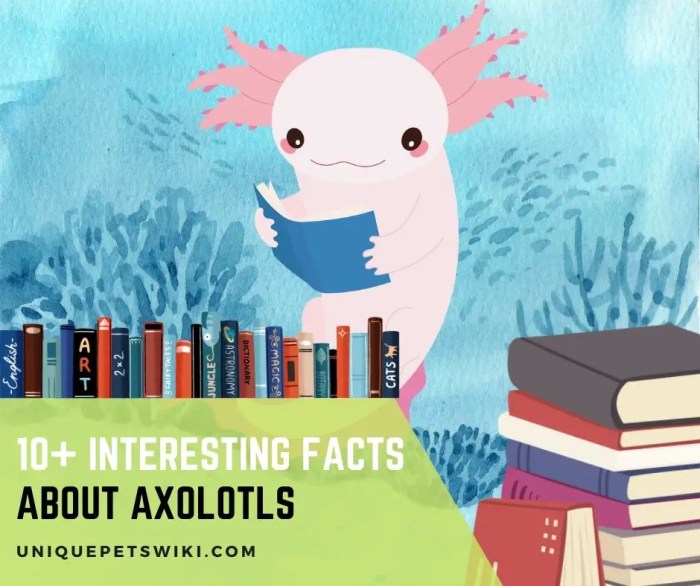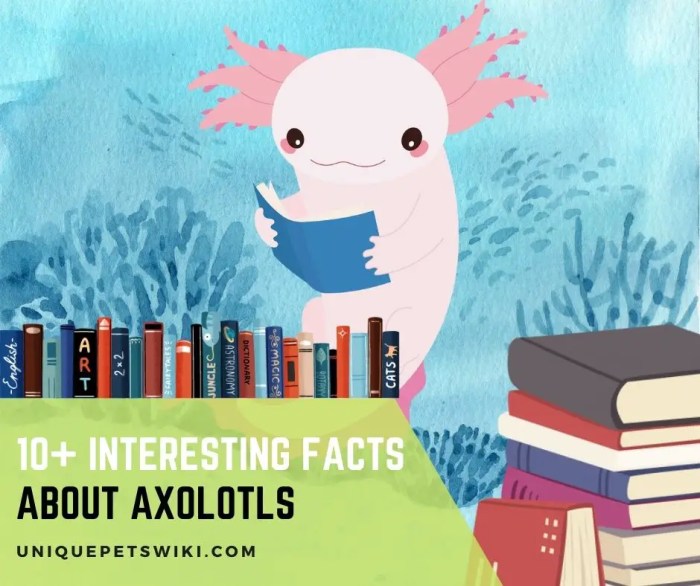Get ready to dive into the world of axolotls! These fascinating creatures, with their adorable faces and even more amazing abilities, are about to become your new best friends. From their incredible power to regenerate limbs to their super chill attitude, axolotls are full of surprises.
This book is your guide to everything you need to know about these amazing amphibians, packed with fun facts, answers to your burning questions, and colorful pictures that will make you want to learn even more.
Whether you’re a kid who loves animals, a budding scientist, or just curious about these unique creatures, this book will take you on a wild ride through the world of axolotls. So grab your favorite comfy spot, get ready to be amazed, and let’s get started!
Axolotl Fun Facts

Axolotls are fascinating creatures that have captured the hearts of people around the world. They are unique amphibians with a variety of cool features and interesting behaviors. Let’s dive into the world of axolotls and explore some of their most amazing traits.
Axolotl Fun Facts
Axolotls are full of surprises! Here are 10 fun facts that highlight their incredible abilities and unique features:
- Axolotls are neotenic, which means they retain their larval features even when they reach sexual maturity. This includes their feathery external gills, which are used for breathing underwater.
- They are known for their amazing regenerative abilities. If an axolotl loses a limb, it can grow a new one back, complete with bones, muscles, and nerves.
- Axolotls can come in a variety of colors, including black, white, albino, golden, and even pink!
- Their scientific name, -Ambystoma mexicanum*, translates to “Mexican walking fish,” but they are actually amphibians, not fish.
- They are carnivores and their diet consists mainly of worms, insects, and small crustaceans.
- Axolotls have a unique way of breathing. They use their external gills to absorb oxygen from the water, but they can also breathe air through their skin.
- They have a special organ called a “cloaca” that serves as their anus, reproductive opening, and urinary opening.
- Axolotls are native to Lake Xochimilco, a lake system near Mexico City.
- They are considered critically endangered due to habitat loss, pollution, and the introduction of invasive species.
- Axolotls are a popular pet, and their popularity has led to a thriving breeding industry, which helps to conserve their numbers.
Axolotl Behavior
Axolotls are nocturnal creatures, which means they are most active at night. Here are 5 interesting facts about their behavior:
- They prefer cooler water temperatures, typically between 60-70 degrees Fahrenheit.
- Axolotls are solitary animals and prefer to live alone, except during breeding season.
- They are very good at camouflage and can blend in with their surroundings.
- Axolotls are relatively slow-moving animals, and they spend most of their time resting on the bottom of their tank.
- They have a unique way of communicating with each other through body language and chemical signals.
Axolotl Conservation
The axolotl’s unique features and amazing abilities have made them a popular pet, but their wild populations are facing serious threats.
So you’re totally digging the whole axolotl thing, huh? They’re like the underwater ninjas of the pet world! You’re probably stoked to learn all about them, right? And while you’re at it, check out this rad Coraline Calendar – it’s totally gonna keep you on track with all the cool stuff happening in the axolotl world! You can totally geek out with your new axolotl facts and make sure you don’t miss a beat.
- Habitat loss and pollution are the primary threats to axolotl populations in the wild. Lake Xochimilco, their natural habitat, has been severely degraded due to urbanization, agricultural runoff, and the introduction of invasive species.
- Conservation efforts are underway to protect axolotls and their habitat. These efforts include habitat restoration, captive breeding programs, and public education campaigns.
- By supporting conservation efforts, we can help to ensure that these amazing creatures continue to thrive for generations to come.
Frequently Asked Questions

You’ve decided to welcome an axolotl into your lifeawesome! These fascinating creatures are low-maintenance, but like any pet, they require specific care to thrive. Let’s dive into some of the most common questions axolotl owners have.
Axolotl Feeding
Axolotls are carnivores, so their diet should consist primarily of live or frozen food. They are not picky eaters and will readily accept a variety of options.
So, you’re thinking about getting an axolotl? That’s awesome! They’re like the coolest, most chill pets ever. And if you’re looking for the ultimate guide to all things axolotl, check out “Fun Facts About Axolotl 47 Frequently Asked Questions by Axolotl Pet Owners and Lovers – Short Info Book for Kids (Colored Edition)”.
It’s basically the “Dear Wantrepreneur” of the axolotl world – Dear Wantrepreneur – but for these adorable, regenerating amphibians. You’ll learn everything from feeding to tank setup, and even how to tell if your axolotl is happy! So, grab your copy and get ready to dive into the world of axolotls!
- What do axolotls eat?Axolotls enjoy a diverse diet, including bloodworms, earthworms, nightcrawlers, brine shrimp, and even small pieces of fish.
- How often should I feed my axolotl?Juvenile axolotls, growing rapidly, should be fed daily. Adults, however, can be fed every other day or even twice a week.
- How much should I feed my axolotl?A good rule of thumb is to offer an amount of food that your axolotl can consume within a few minutes. Overfeeding can lead to health problems.
- Can I feed my axolotl pellets?While some axolotls may accept pellets, it’s best to stick to a diet of live or frozen foods. These provide the essential nutrients and variety your axolotl needs.
Axolotl Housing
The right environment is crucial for your axolotl’s well-being.
So you’re thinking about getting an axolotl? Those little guys are totally rad, but owning a pet is like being a bartender – you gotta know your stuff! Check out Bar Tips Everything I Needed to Know in Sales I Learned Behind the Bar to get some tips on how to keep your new pet happy and healthy.
You’ll be a pro axolotl owner in no time, just like you’d be a pro bartender after reading that book!
- What size tank do I need for my axolotl?A 10-gallon tank is a good starting point for a single axolotl. However, larger is always better!
- What kind of substrate should I use?Sand or fine gravel is ideal for axolotls, as it prevents them from accidentally ingesting larger substrates that could cause intestinal blockages.
- Do I need a filter?Yes! A filter is essential for maintaining water quality. Choose a filter that provides adequate filtration for your tank size.
- What about decorations?Avoid sharp or pointy decorations that could injure your axolotl. Smooth rocks, caves, and plants are good choices.
Axolotl Water Parameters
Water quality is paramount for axolotl health.
- What temperature should the water be?Axolotls prefer cool water, between 60-68°F (15-20°C).
- How often should I change the water?Aim for a 25% water change weekly. This helps maintain water quality and removes waste products.
- What is the ideal pH for axolotls?The ideal pH range for axolotls is between 6.5-7.5.
- Should I use dechlorinator?Absolutely! Tap water contains chlorine and chloramine, which are toxic to axolotls. Use a dechlorinator to remove these chemicals before adding water to your tank.
Axolotl Health
Keeping an eye out for common health issues can help you catch problems early.
Yo, wanna know the 4-1-1 on axolotls? “Fun Facts About Axolotl 47 Frequently Asked Questions by Axolotl Pet Owners and Lovers – Short Info Book for Kids (Colored Edition)” is the ultimate guide for all things axolotl, from their totally rad regenerative powers to their quirky eating habits.
Download And Listen Here to get your axolotl knowledge on point, dude! This book’s got all the answers you need to become an axolotl whisperer, so you can impress your friends with your amphibian expertise.
- What are some common health problems in axolotls?Common issues include constipation, fungal infections, and skin parasites.
- How can I prevent health problems in my axolotl?Maintaining proper water quality, providing a balanced diet, and avoiding stress are crucial for preventing health problems.
- What should I do if my axolotl gets sick?If you notice any changes in your axolotl’s behavior or appearance, consult a veterinarian experienced with amphibians.
Axolotl Care Table
| Tank Size | Water Temperature | Diet | Common Health Issues |
|---|---|---|---|
| 10 gallons or larger (for a single axolotl) | 60-68°F (15-20°C) | Live or frozen bloodworms, earthworms, nightcrawlers, brine shrimp, and small pieces of fish | Constipation, fungal infections, skin parasites |
Book Review

“Fun Facts About Axolotls: 47 Frequently Asked Questions by Axolotl Pet Owners and LoversShort Info Book for Kids (Colored Edition)” is a delightful and informative read for anyone fascinated by these unique amphibians. The book caters to a broad audience, encompassing both children eager to learn about axolotls and adults seeking a concise yet comprehensive guide.
Target Audience and Suitability
This book’s accessibility makes it ideal for a diverse readership. The engaging writing style and simple language cater to young readers, while the depth of information satisfies adults seeking a deeper understanding of axolotls. Whether you’re a child just discovering the wonders of these creatures or an experienced axolotl owner, this book offers something for everyone.
Educational Value
The book excels in its educational value. It provides a clear and concise overview of axolotl biology, care, and conservation, presented in a manner that is both informative and engaging. The book covers essential topics such as:
- Axolotl Anatomy and Physiology: The book explains the unique characteristics of axolotls, including their external gills, neoteny, and regenerative abilities. It delves into their fascinating adaptations and how these features contribute to their survival.
- Axolotl Habitat and Diet: Readers gain insights into the natural habitat of axolotls in the lakes and canals of Mexico, as well as their dietary preferences, which include worms, insects, and small crustaceans. The book emphasizes the importance of providing a suitable environment for axolotls in captivity.
- Axolotl Care and Breeding: The book provides practical advice on caring for axolotls, including setting up an appropriate tank, maintaining water quality, and feeding them a balanced diet. It also explores the fascinating process of axolotl breeding and the challenges associated with it.
- Axolotl Conservation: The book highlights the threats facing axolotls in the wild, such as habitat loss, pollution, and the introduction of invasive species. It emphasizes the importance of conservation efforts and encourages readers to play a role in protecting these endangered creatures.
Visual Appeal
The book’s visual appeal further enhances the learning experience. The colorful illustrations and photographs bring the world of axolotls to life, making it easier for readers to visualize these fascinating creatures. The use of visuals helps to break up the text and make the information more accessible, particularly for younger readers.
Ultimate Conclusion

Now that you’ve learned all about these incredible creatures, you’re ready to become an axolotl expert! From their quirky personalities to their amazing abilities, axolotls are truly one-of-a-kind. Remember, these amazing amphibians need our help to thrive. By spreading the word about axolotls and supporting conservation efforts, you can help ensure that these amazing creatures continue to fascinate generations to come.
Commonly Asked Questions
What is the best way to feed an axolotl?
Axolotls are carnivores, so their diet should consist of live foods like worms, bloodworms, and brine shrimp. Avoid overfeeding, as this can lead to health problems.
How often should I change the water in my axolotl’s tank?
You should do partial water changes (about 25% of the tank volume) every week to keep the water clean and healthy for your axolotl. Use dechlorinated water that’s the right temperature for your axolotl.
What kind of tank do I need for an axolotl?
Axolotls need a spacious tank, ideally at least 10 gallons for a single axolotl. Make sure the tank is escape-proof, as axolotls are expert climbers!
What temperature should the water be for an axolotl?
Axolotls prefer cool water, between 60-68 degrees Fahrenheit. Avoid using heaters, as they can make the water too warm for your axolotl.
Are axolotls easy to care for?
Axolotls can be relatively easy to care for, but they do require some specific needs. Make sure you’re ready to provide the right environment and diet before getting an axolotl.

